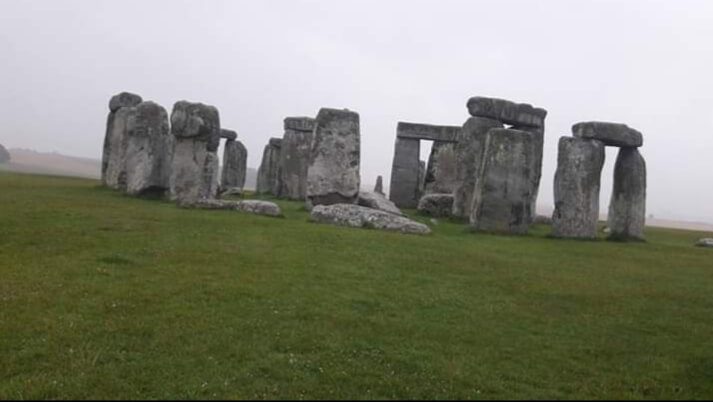Reading Time: 3 minutes
 Paramita takes us on a tour of Stonehenge, walking down the memory lane. An exclusive for Different Truths.
Paramita takes us on a tour of Stonehenge, walking down the memory lane. An exclusive for Different Truths.
In the summer of 2017, I along with my husband visited the Stonehenge. That summer we went to England to drop our daughter in Oxford for a summer course. We took a bus from London in the morning and within a few hours, we reached Stonehenge. We got down at the Visitor’s Centre. A shuttle bus took us to the main attraction, the Stonehenge. It was a cold and rainy day with strong winds blowing. The wind ‘got under my umbrella’ and I was wet to the bones. My husband was hurrying me up and told me to take a quick glance at the Stonehenge and catch the next shuttle. He knew I was freezing, and my light jacket did not suffice. But I, the indomitable adventurer and romantic, requested him to go back to the Visitor’s Centre and to wait for me there. I went around the Stonehenge for almost two hours and then ambled to the shuttle stand and … my husband was there. He too drenched to his bones was waiting there in the rain for me for the last two hours.
We took a bus from London in the morning and within a few hours, we reached Stonehenge. We got down at the Visitor’s Centre. A shuttle bus took us to the main attraction, the Stonehenge. It was a cold and rainy day with strong winds blowing.
My heart stopped a beat when I first saw the Stonehenge. The stone structure  stood there in front of my eyes…the ancient temple in all its splendour has been standing here for thousands of years and at last, I saw it. The scientist in me braved the weather and tried to understand and imagine when and why this structure was made. Daughter of a famous Anthropologist, prehistoric structures fascinate me. The stone pillars arranged in a circular manner were aligned to the movement of the sun. This structure had been made by prehistoric people, about 4500 years ago.
stood there in front of my eyes…the ancient temple in all its splendour has been standing here for thousands of years and at last, I saw it. The scientist in me braved the weather and tried to understand and imagine when and why this structure was made. Daughter of a famous Anthropologist, prehistoric structures fascinate me. The stone pillars arranged in a circular manner were aligned to the movement of the sun. This structure had been made by prehistoric people, about 4500 years ago.
The Stonehenge has three types of stones—Sarsen Stones, Blue Stones and Horseshoe of Sarsen trilithons. There is no longer a perfect circle, many stones have been worn out by the weather. There are two circles, the inner one exactly at the centre of the outer circle. A pathway leads to the Stonehenge and is called the Stonehenge Avenue and an arrow there shows the Solstice Alignment. There is a stone called the Heel Stone nearby. A flattened stone leading to the circular central stones is known as the Slaughter Stone. Two stones are placed opposite to each other in the outer circle, the Station Stones. Again, both have Station Stone markers(depressions) beside them opposite to each other. There are two more depressions, the Aubrey Hole markers on both sides of the shuttle pathway.
The Stonehenge has three types of stones—Sarsen Stones, Blue Stones and Horseshoe of Sarsen trilithons. There is no longer a perfect circle, many stones have been worn out by the weather. There are two circles, the inner one exactly at the centre of the outer circle. A pathway leads to the Stonehenge and is called the Stonehenge Avenue and an arrow there shows the Solstice Alignment.
After meeting my husband at the shuttle bus point, we both took a shuttle to the Visitor’s Centre. We were shivering with cold. Hot chicken pie and steaming hot potato leek soup from the food counter of the Centre were our saviours. At the rear end of the Centre were some artificially made Neolithic dwellings replicating the prehistoric dwellings. The Visitor’s Centre was a kind of mini-museum with slide shows and details of the Stonehenge. The mystery of the Neolithic period unfolded in the museum.
We then went back to London with fond memories. Whenever I have hot chicken pie or steaming hot potato leek soup, I am transported to the cold rainy day in the Stonehenge.
Photos by the author

















